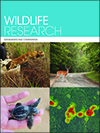
Wildlife Research
Volume 50 Number 6 2023
Special IssueMonitoring wildlife
WR21171What factors affect species richness and distribution dynamics within two Afromontane protected areas?
 , Charles Birasa Kayijamahe, Abel Musana, Prosper Uwingeli, Christopher Masaba, Madeleine Nyiratuza and Jennifer Frances Moore
, Charles Birasa Kayijamahe, Abel Musana, Prosper Uwingeli, Christopher Masaba, Madeleine Nyiratuza and Jennifer Frances Moore 
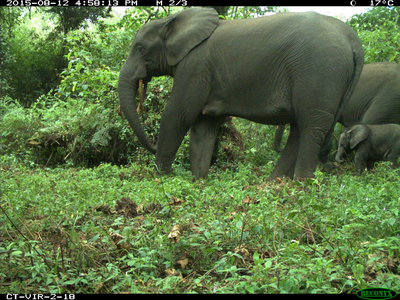
Understanding trends in species richness and distribution is crucial for species conservation. We assessed population trends using camera traps coupled with multi-season occupancy models and found an increase in species richness and distribution for most species overtime. These results give insights on ways of tackling illegal activities and human–wildlife conflict on the basis of species commonly found along the park boundary. Photograph by TEAM Network.
WR21159Snow track counts for density estimation of mammalian predators in the boreal forest
 , Brian G. Slough, Kim Poole, Stan Boutin, Elizabeth J. Hofer, Garth Mowat, Dennis Murray and Charles J. Krebs
, Brian G. Slough, Kim Poole, Stan Boutin, Elizabeth J. Hofer, Garth Mowat, Dennis Murray and Charles J. Krebs
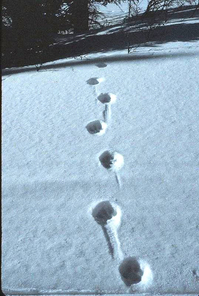
Estimation of abundance for cryptic species such as forest meso-carnivores is challenging. This manuscript evaluates the utility of snow-track indices for estimating abundance of Canada lynx and coyotes with data from three different intensive studies in northern Canada, and shows that track counts may be reliably used to monitor trends in numbers. We evaluate factors affecting track counts and make survey design recommendations. Photograph by Mark O’Donoghue.
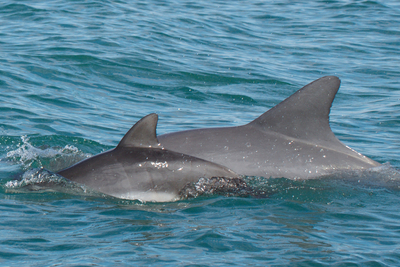
Exmouth Gulf, Western Australia, is under increasing human pressure from industrial activities. The aim was to (1) provide data on the distribution, encounter rate, group size and behaviour of dolphins, and (2) report on the occurrence of other marine megafauna in the western gulf. The results provided are applicable for the spatial management and conservation efforts of marine megafauna, and aid in informing environmental impact assessments of individual and cumulative pressures. Photograph by Kate Sprogis.
WR22023 Abstract | WR22023 Full Text | WR22023PDF (4.1 MB) Open Access Article
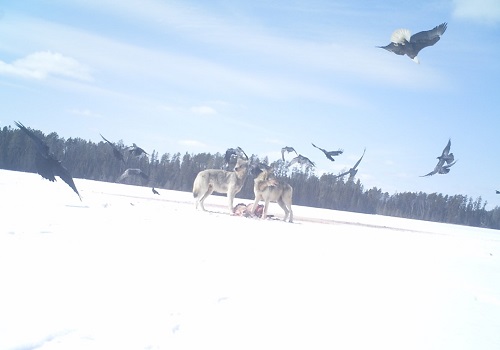
I evaluated non-invasive methods, along with ongoing radio-collar monitoring, during three winters (2019–2021) in north-eastern, Minnesota, USA, to census resident grey wolves (Canis lupus) in a 2060 km2 area. I attempted to enumerate individual pack sizes as has been historically done to compile the census. Non-invasive methods were not a complete replacement of radiotelemetry, but they reduced the project’s reliance on animal captures by 50%, increased precision of the annual wolf count, provided enhanced wolf-pack information, and increased community involvement. Photograph by Bert Hyde.
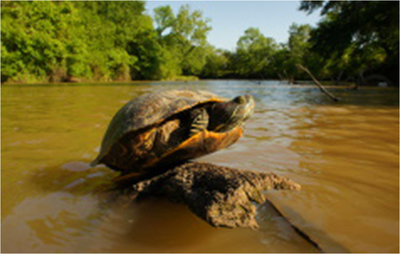
Learned responses of wildlife to trapping can introduce considerable bias into analyses based on repeated or long-duration surveys of a population. This study investigated the ability of freshwater turtles to learn and avoid the locations of traps. We documented learned trap avoidance and make recommendations for avoiding the sampling bias that results from this behaviour. Photograph by Donald McKnight.
WR21061 Abstract | WR21061 Full Text | WR21061PDF (5.4 MB) Open Access Article
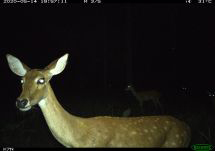
White-flash camera traps provide colour night-time photos, but do they cause greater disturbance to target animals than do infrared flash camera traps? This research aimed to investigate the influence of flash type on Eld’s deer behaviour and detection rate, and showed that although some differences in response does occur depending on flash type, this does not affect the detection rate over time. We conclude that white-flash cameras are suitable for population assessment surveys and are more effective in individual identification than are infrared cameras. Photograph by Rachel Ladd.
WR22055 Abstract | WR22055 Full Text | WR22055PDF (1.1 MB) | WR22055Supplementary Material (683 KB) Open Access Article
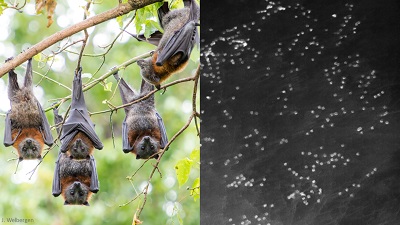
Reliable monitoring of trends in flying-fox populations is essential for flying-fox conservation. By comparing ground-based counting methods with reference counts derived from drone-acquired thermal imagery, we found that ground-based methods severely underestimate the true number of flying-foxes in roosts and had very limited precision. Drone-based monitoring of flying-foxes can facilitate more effective conservation management of these ecologically important species. Photographs by Justin A. Welbergen (left) and Eliane D. McCarthy (right).
WR21120 Abstract | WR21120 Full Text | WR21120PDF (1.6 MB) | WR21120Supplementary Material (633 KB) Open Access Article



